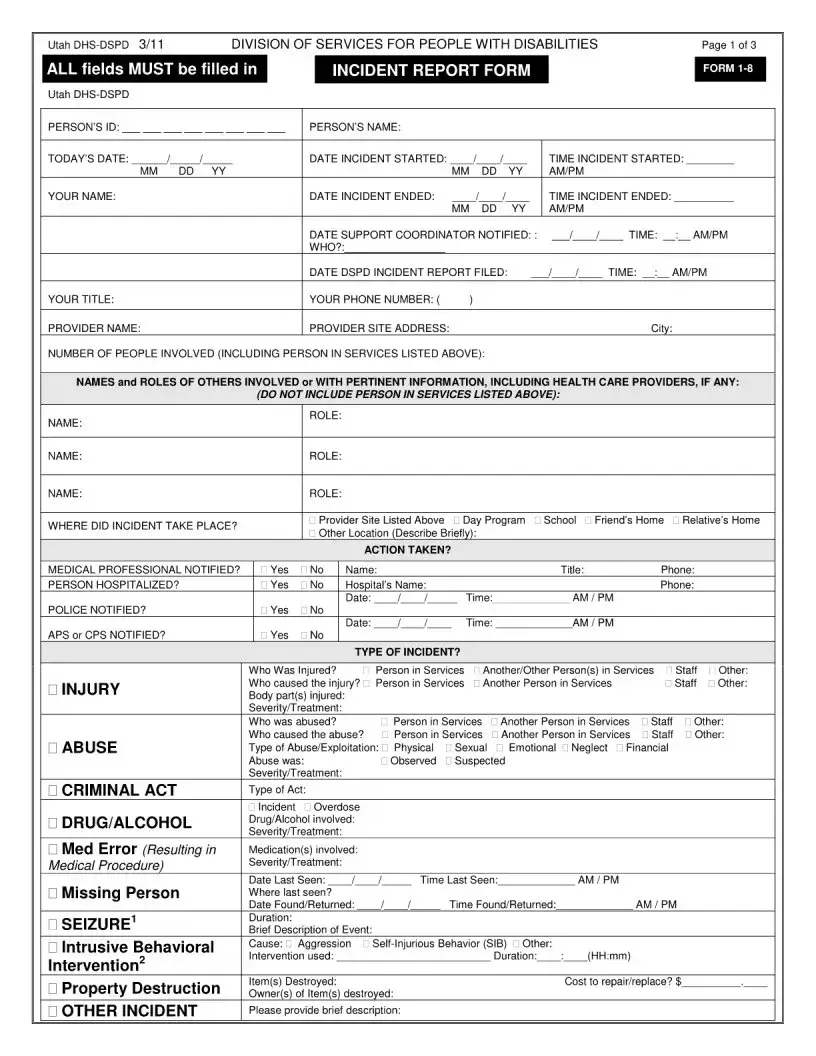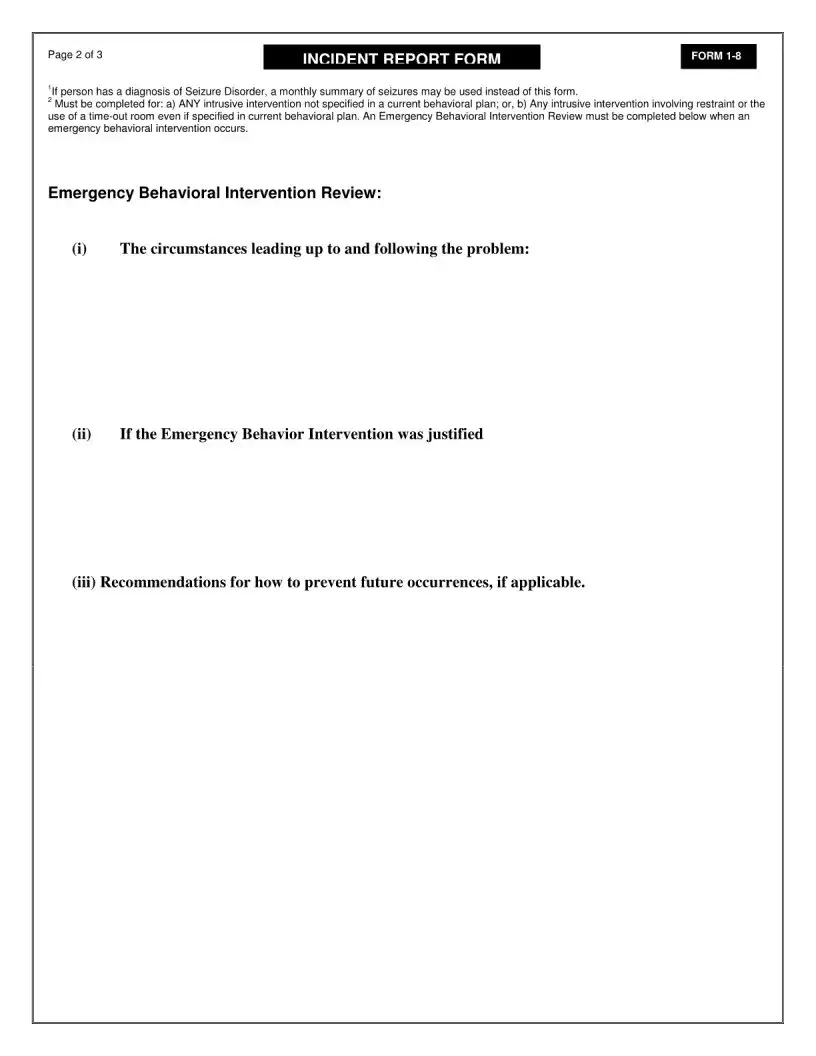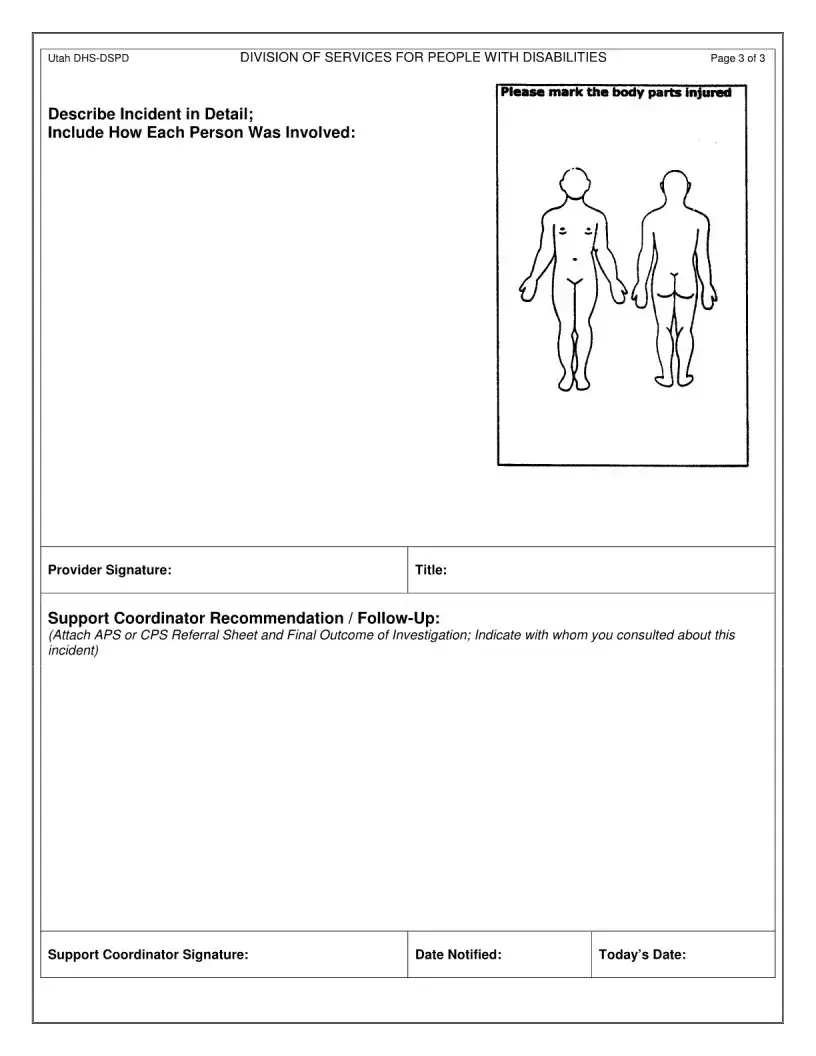The Utah 1-8 form, integral to the legal procedures within the state of Utah, shares similarities with other documents used in various states and contexts, primarily because of its role in facilitating legal processes or providing vital information. One of these documents is the Advanced Health Care Directive. Like the Utah 1-8 form, the Advanced Health Care Directive allows individuals to outline their preferences for medical care, particularly at life's end. It ensures that an individual's medical and post-death wishes are respected and followed, emphasizing personal rights and anticipatory decision-making.
Another document similar in nature to the Utah 1-8 form is the Power of Attorney (POA) document. The POA grants another individual the authority to act on someone's behalf in legal or financial matters, should they become unable to do so themselves. This document shares the principle of delegate authority found in the Utah 1-8 form, where specific rights and responsibilities can be transferred to ensure proper management and protection of one’s affairs according to their wishes.
The Living Will is also akin to the Utah 1-8 form. It specifically captures an individual's wishes regarding medical treatment in scenarios where they are no longer able to communicate these preferences due to incapacitation. By clarifying one's desires in advance, it mirrors the preemptive decision-making aspect of the Utah 1-8 form, focusing on healthcare decisions to be made when the individual cannot voice their decisions themselves.
Comparable as well is the Last Will and Testament, which details how an individual's estate should be distributed after their death. While the focus is different, the essence of preparing for future certainty aligns closely with the Utah 1-8 form. It ensures that an individual’s assets are allocated according to their preferences, safeguarding their estate and providing clear instructions to minimize disputes among surviving relatives or other parties.
Furthermore, the Durable Medical Power of Attorney shares similarities with the Utah 1-8 form by allowing individuals to designate a healthcare agent. This agent makes medical decisions on behalf of the individual if they are incapacitated. It emphasizes the theme of assigning decision-making authority, ensuring that healthcare decisions align with the patient's values, preferences, and specified conditions, which is a cornerstone purpose of the Utah 1-8 form.


